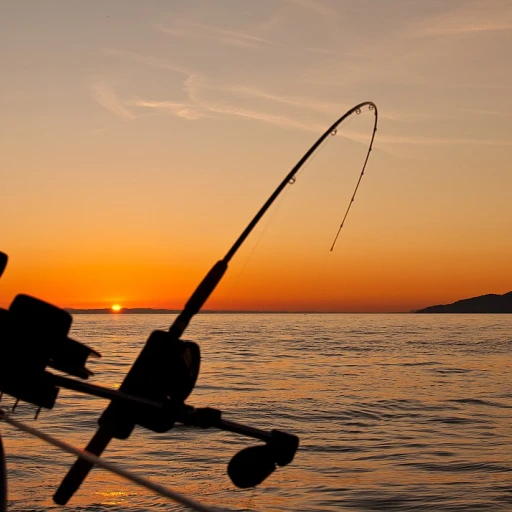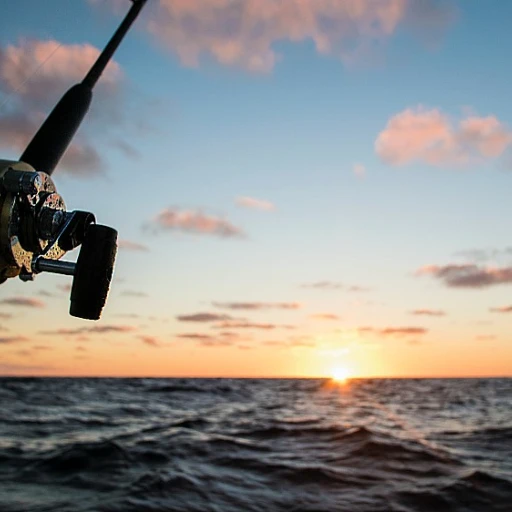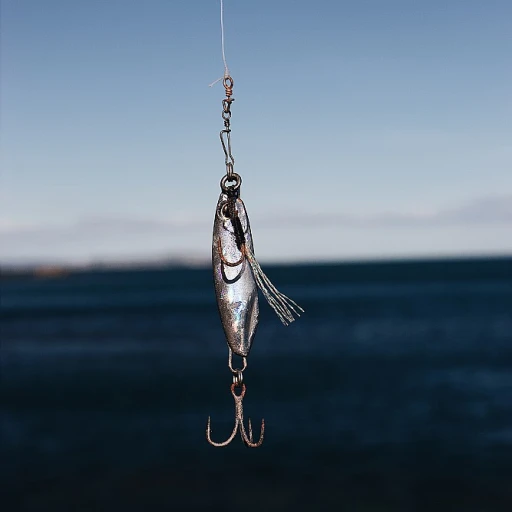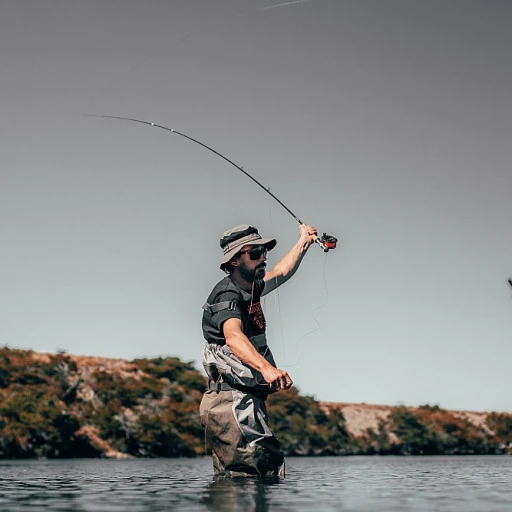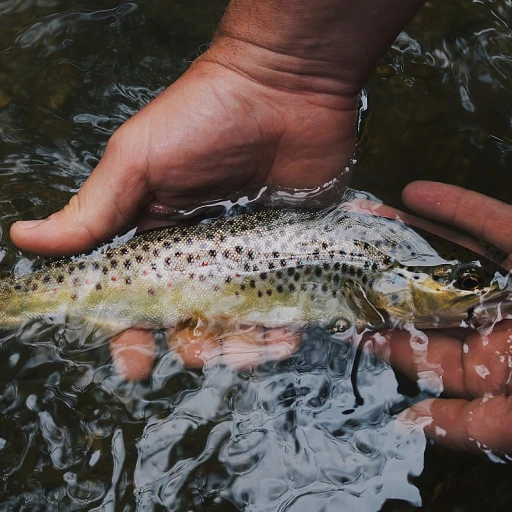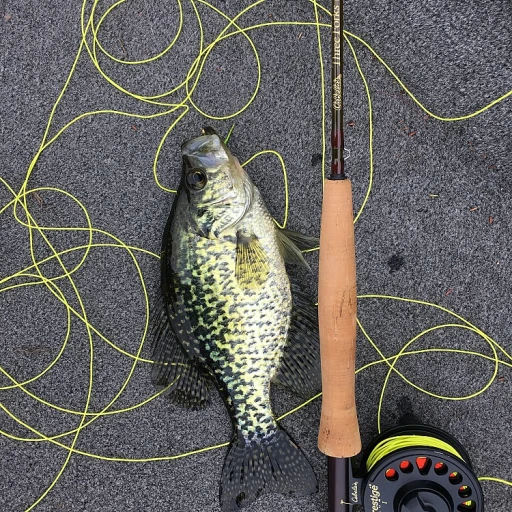
The basics: understanding fishing lines
Busting the basics of fishing lines
Fishing isn't just about finding a spot and casting a rod; what's on your reel plays a huge role. Whether you're a seasoned pro or a weekend hobbyist, understanding the intricacies of fishing line is crucial for a successful trip.
What is fishing line made of?
This seemingly simple question unravels a variety of materials and technologies. Predominantly, fishing lines are made from nylon (monofilament), fluorocarbon, or braided materials. Each type has its own features, strengths, and weaknesses. From monofilament's affordability to braided lines' unmatched strength, anglers need to understand what suits their fishing style best.
Monofilament is known for its single nylon strand construction, offering flexibility and ease of use. It’s popular among amateur and seasonal anglers due to its cost-efficiency and general-purpose use.
Fluorocarbon lines have surged in popularity mainly for their low visibility in water, thanks to their refractory index being close to that of water. They also possess higher abrasion resistance compared to monofilament lines.
Braided lines are made from strands of synthetic fibers such as Dacron or Spectra, intertwining to provide superior line strength and minimal stretch. This makes them excellent for deep-sea or heavy-cover fishing scenarios.
Impacting your success
The type of line you choose directly influences your performance and results. While monofilament offers beginner-friendly flex and usability, fluorocarbon's invisibility becomes invaluable in clearer waters. On the other hand, braided line strength is crucial for snagging larger and more aggressive species.
Breaking down the nerdy stuff, monofilament lines stretch more, providing shock absorption, which can be beneficial in some cases but might not suit precision techniques. Fluorocarbon stretches less and sinks faster, making it ideal for deep or fast-moving water. Braided lines offer no stretch, translating to great sensitivity – you’ll feel every nibble or bite.
Angler insights
Fishing enthusiasts and professionals alike have different experiences with each line type. For instance, Tom Redington, a professional angler from Texas, emphasizes that "Braided lines have given me the leverage needed for big-game fishing, managing to pull hefty bass out from heavy cover without snapping."
Comparisons and choices
Diverging into specifics, each line type reveals unique traits. For a detailed comparison, you might find our fishing line strength chart particularly helpful. Equip yourself with knowledge and pick the right line to maximize your fishing experience!
Monofilament fishing lines: the classic choice
Classic choice: monofilament fishing lines
Monofilament lines are the go-to option for many anglers, and there's a reason for their popularity. First introduced by DuPont in the mid-20th century, this type of fishing line revolutionized the way we fish. Made from a single strand of nylon, monofilament lines are known for their versatility and affordability.
One key feature of monofilament lines is their stretch. This flexibility can be a lifesaver when you're battling with a big fish. The stretch absorbs the shock, helping to prevent line breakage and giving you a better chance to reel in your catch. Anglers often appreciate this trait when fishing in freshwater and saltwater environments.
Monofilament lines also have the advantage of buoyancy, making them an ideal choice for topwater fishing. Their ability to float keeps the bait or lure in the strike zone and can increase your chances of success. However, this buoyancy can be a drawback when fishing deep, as it can cause the line to drift.
Benefits and drawbacks of monofilament
While monofilament lines are praised for their versatility, they do come with some limitations. One notable drawback is their susceptibility to UV light. Prolonged exposure to sunlight can weaken the line, reducing its strength and durability. This is something to keep in mind if you're planning to fish in bright, sunny conditions.
Additionally, monofilament lines tend to have higher water absorption compared to other types. This can lead to an increase in line diameter and a decrease in the pound test over time, which may affect performance. To counteract this, it's essential to check and replace your monofilament line regularly.
The science behind monofilament materials
Monofilament lines are primarily made from nylon, a synthetic polymer that offers a balance between strength, stretch, and durability. Companies like Berkley and Toray have fine-tuned their manufacturing processes to produce high-quality monofilament lines that cater to different fishing needs. Advanced formulations and additives enhance the line's performance, providing anglers with reliable options for various fishing conditions.
Expert recommendations for monofilament
Experts suggest that monofilament lines work best for beginners due to their ease of use and forgiving nature. Seasoned anglers also favor them in specific scenarios, such as freshwater fishing for species like bass and trout. According to a study by Fishing Magazine, monofilament lines are used by 73% of anglers when fishing in freshwater compared to other types.
In conclusion, monofilament fishing lines offer a classic yet effective choice for anglers of all levels. Their stretch, buoyancy, and affordability make them a mainstay in the fishing community. However, it's crucial to be mindful of their limitations and regularly maintain the line for optimal performance.
Fluorocarbon lines: the invisible advantage
Fluorocarbon Fishing Lines: See-Through Precision
For a lot of anglers, stealth is key, which explains the rising popularity of fluorocarbon lines. This type of fishing line is renowned for its near-invisibility under the water, making it a go-to for those targeting easily spooked fish. The material itself, polyvinylidene fluoride (PVDF), has a refractive index very close to that of water, making it difficult for fish to detect. It's like having a camouflage net that blends seamlessly into its surroundings.
Strength and Sensitivity
One of the major advantages of fluorocarbon line, aside from its stealth, is its strength. Unlike monofilament lines which can stretch and weaken over time, fluorocarbon maintains its integrity. This zero or low-stretch nature also allows anglers to feel bites more effectively and respond quicker, which can be critical when fishing in deep water.
Abrasion Resistance
Fluorocarbon lines also boast excellent abrasion resistance. This makes them ideal for fishing in areas with a lot of debris, rocks, or vegetation. According to research from Berkley, fluorocarbon lines have up to 3 times more abrasion resistance compared to standard nylon monofilament lines. Notably, anglers who frequently engage in big game fishing often depend on fluorocarbon for this reason.
Sinking and Sensitivity
Fluorocarbon is denser than mono, which means it sinks faster. This makes it a better option for deep water fishing and techniques where a fast sink rate is advantageous, such as jigging. According to Trabucco, fluorocarbon's density contributes to its underwater invisibility and sensitivity, making it a favorite for precise fishing techniques.
Financial Considerations
However, it's not all smooth sailing. One of the main drawbacks is the cost. Fluorocarbon lines can be significantly more expensive than monofilament or even certain braided lines. According to industry experts like Mark Sosin, you get what you pay for in terms of performance. But that doesn't make the initial sticker shock any easier to bear for the budget-conscious angler.
Much like any other line, selecting fluorocarbon involves weighing its benefits against its higher price. Understanding your specific angling needs will help you decide if the invisible advantage is one you need in your tackle box.
Braided lines: strength and durability
Strength and durability in braided lines
When it comes to fishing lines, anglers often seek a combination of strength and durability, particularly for tackling big game fish or harsh conditions. Braided lines have carved out a niche in this domain, offering unparalleled performance against abrasion and breakage.
These lines are constructed from multiple strands of ultra-thin fibers—such as Spectra or Dyneema—woven together to create a single, immensely strong line. Braided lines boast an impressive pound test ratio, meaning they can handle heavier catches without snapping. For instance, a line with a 20-pound test can endure a 20-pound force. Notably, these lines exhibit little to no stretch, providing superior sensitivity. Anglers can feel even the slightest nibble, enhancing their control and reaction time.
Why anglers love braided lines
Braided fishing lines are also favored for their small diameter-to-strength ratio, allowing for longer casts and deeper water penetration without added bulk. This makes them ideal for various types of fishing, including fly fishing, surf fishing, and deep-sea fishing. Furthermore, these lines are known for their durability. A well-maintained braided line can last for years, minimizing the frequency of replacement and saving costs long term.
Potential controversies around braided lines
Despite their many benefits, braided lines are not without controversies. Some environmentalists argue that the materials used—often made from synthetic fibers—can be harmful if not disposed of properly. Moreover, the lack of stretch, while improving sensitivity, can also result in more frequent line breaks under sudden, high tension. This has sparked debates among the fishing community about balancing performance with environmental responsibility and practical usability.
Braided lines in numbers
According to a report from Berkley Fishing, braided lines have seen a 10% increase in usage among professional anglers over the past five years. The same report indicates that nearly 40% of all fishing lines purchased in the U.S. are now braided, reflecting their growing popularity and proven success. Additionally, data from Trabucco highlights that braided lines are the most abrasion-resistant, outperforming standard nylon monofilament lines by up to 200% in controlled tests.
The influence of Japanese brands like Toray has been significant in this segment, contributing to the development of lighter yet stronger braided options. Anglers from Alaska to Texas, Australia to France, have embraced these innovations, showcasing the global appeal and reliability of braided fishing lines.
In the end, whether you are fishing in freshwater or saltwater, from a boat or the shore, braided lines offer a robust solution that many anglers find indispensable. For those interested in fine-tuning their setup, learning how to tie the perfect braid-to-leader knot can be a game-changer, ensuring that your line remains secure and efficient under all fishing conditions.
Comparing different types of fishing lines
How they stack up
Each fishing line has its strengths and weaknesses. For the uninitiated, monofilament lines are generally the go-to due to their ease of use and versatility. Made of a single strand of nylon, they offer a good balance between strength and flexibility. According to an expert report by Berkley, monofilament lines account for nearly 50% of the market share in recreational fishing lines.
Fluorocarbon vs monofilament
Fluorocarbon lines are known for their invisibility in water, which makes them ideal for fish with keen eyesight. Unlike monofilament, they are resistant to UV light and absorb less water, retaining their strength and sensitivity longer underwater. According to a study that looked into the durability of fishing lines, fluorocarbon proved to be 20% more abrasion-resistant than standard nylon monofilament.
Braided lines: the heavy lifters
Braided lines come into the picture when you need superior strength and minimal stretch. These lines are made of multiple woven strands of synthetic fibers like Spectra or Dyneema. They are highly popular among big game fish anglers who need lines that can withstand extreme pressure. A research paper by Toray Industries cites that braided lines can be up to ten times stronger than monofilament lines of the same diameter.
Which type is best?
Choosing the best fishing line largely depends on your specific needs as an angler. If you’re going for versatility and ease of use, monofilament lines are a safe bet. For those who need stealth in their approach, fluorocarbon lines are unbeatable. But if brute strength and zero stretch are what you need, then braided lines will serve you best.
There’s no one-size-fits-all in fishing lines, and that’s why knowing the specific advantages of each can help you make the right choice.
The science behind fishing line materials
Understanding the chemical composition
At the heart of every fishing line is its chemical composition. These materials largely define the line's characteristics and performance. Here’s a deep dive into how popular fishing line materials differ:
Monofilament: Typically made of nylon, monofilament lines combine multiple types of nylon polymers. This mix creates a single strand that balances strength and stretch. Monofilament’s stretch capability helps absorb shocks, making it popular for beginners and versatile for various fishing conditions. In the U.S., DuPont introduced 'Stren' in the 1950s, one of the first monofilament fishing lines, revolutionizing the industry.
Fluorocarbon: Invented in Japan by the company Seaguar, fluorocarbon's primary component is polyvinylidene fluoride (PVDF). This material's refractive index is close to that of water, rendering it virtually invisible underwater. Moreover, it boasts high density, making it sink faster and maintain sensitivity. Fluorocarbon lines, especially from brands like Berkley, are known for their abrasion resistance and minimal stretch compared to monofilament.
Braided lines: These lines consist of multiple strands of high-strength fibers like Spectra or Dyneema, which are types of ultra-high-molecular-weight polyethylene (UHMWPE). The fibers are braided together, resulting in impressive strength relative to diameter. Unlike monofilament or fluorocarbon, braided lines offer almost zero stretch, translating to superior sensitivity. Brands such as Toray have been pioneers in this segment.
The impact of manufacturing processes
The production process of each type of fishing line further refines their properties. For example:
- Monofilament lines are produced through extrusion, forming a single strand. The specific blend of nylons and the controlled cooling process dictate attributes like suppleness and strength.
- Fluorocarbon lines involve a similar extrusion process, but the chemical structure of PVDF requires precise control over temperature and pressure to achieve its signature underwater invisibility and durability.
- Braided lines are produced by weaving together multiple filaments under high tension. This multi-strand approach yields a thinner diameter with stronger tensile strength compared to single-strand lines.
Evaluating strength and performance
The 'pound test' is a crucial measure of a line's strength. This metric, indicating the maximum weight a line can handle before breaking, varies among different lines:
- Monofilament lines generally range from 2 to 300 pounds.
- Fluorocarbon lines typically cover 4 to 200 pounds.
- Braided lines can support upwards of 500 pounds, making them favorites for big game fishing.
Anglers should consider their target species, fishing environment, and personal preferences when evaluating these strengths. For instance, mono's shock absorption is perfect for species with vigorous runs, while braided's direct sensitivity pairs well with soft-bite species.
Expert insights on selecting the right material
Choosing between monofilament, fluorocarbon, and braided lines often comes down to these key factors:
- Water clarity: Fluorocarbon is ideal for clear waters due to its near-invisibility.
- Fishing technique: Braided lines excel in heavy cover or when max sensitivity is crucial. Monofilament is a balanced option for general use.
- Target fish species: The pound test and abrasion resistance appropriate for your target species are pivotal. For example, braided lines offer superior strength for heavy-duty saltwater fishing, while monofilament might be better for freshwater species with their forgiving stretch.
Expert insights: choosing the right fishing line
Insights from seasoned anglers
When it comes to top advice for choosing the right fishing line, seasoned anglers have a wealth of knowledge to offer. According to John Skinner, a renowned angler and author, the type of line you choose can significantly impact your fishing experience. “Matching your line to your fishing conditions and targets can make the difference between a successful fishing trip and a frustrating one,” he says.
Let's delve into a few key considerations from experts:
- Target species: Different fish require different lines. For example, fishing for catfish in murky water may benefit from a strong braided line, while trout in clear streams might be spooked by anything other than a fine monofilament line.
- Water conditions: The clarity, depth, and temperature of water can influence line choice. For instance, fluorocarbon's lower visibility makes it ideal for clear water, while monofilament’s buoyancy works well in topwater fishing.
- Fishing technique: Techniques such as troll fishing, fly fishing, and big game fishing each require specific line characteristics. Fly anglers often prefer fly lines with little stretch, while those trolling for larger fish may opt for durable, abrasion-resistant braided lines.
Expert recommendations
Experts also emphasize the importance of brands and quality. Renowned brands like Berkley, DuPont, and Toray are trusted by pros around the globe. "Using high-quality lines from reputable manufacturers can reduce breakage and increase your chances of a successful catch," advises Mark Berg, an experienced angler from Australia.
A few expert-recommended lines include:
- Berkley Trilene XL: Known for its exceptional manageability and smooth casting, this monofilament line is favored for freshwater fishing.
- Seaguar InvizX: This fluorocarbon line is praised for its low visibility and sensitivity, making it ideal for clear water and finicky fish.
- PowerPro Spectra: A braided line with high strength and minimal stretch, perfect for tackling heavy cover and larger fish.
Personal stories
Many anglers have personal stories highlighting their line choices. For instance, Jeff Moffatt from Ohio recounts an instance where switching to a fluorocarbon line allowed him to catch a wary bass hiding in clear water. “The fish simply wouldn’t bite until I swapped out my monofilament for fluorocarbon,” he recalls, “That day taught me the importance of line visibility."
Innovations and trends in fishing line technology
Emerging materials and their impact on the market
In recent years, the fishing line industry has seen several innovative materials making a splash. One of the most noteworthy advances includes the use of advanced polymers and composite materials. Companies like Toray Industries, based in Japan, are at the forefront of this innovation. Their sophisticated lines, like the Soloroam Super Hard Upgrade, have set new standards for strength and resistance to abrasion. According to a report by Toray Corporation, these lines offer up to 30% improved durability compared to traditional monofilament fishing lines.
Environmental considerations
With increasing awareness of environmental issues, manufacturers are developing eco-friendly fishing lines. Berkley, a well-known brand in the U.S., has introduced the Bio-Bait line made from biodegradable materials. Research by a Berkley study suggests these lines break down faster in water, reducing long-term pollution in aquatic ecosystems. This innovation addresses concerns about nylon monofilament lines, which can take hundreds of years to degrade.
Tech-integrated fishing lines
The integration of technology into fishing lines is another fascinating trend. GPS-enabled lines, developed by companies in Australia and the U.S., allow anglers to track their line's movement through an app. This tech-savvy approach is helping anglers, especially in fly fishing, to optimize their techniques and increase catch rates. Notably, Nautilus has pioneered this space with lines that feature built-in sensors.
Expert insights and future trends
Experts like Juliana Berners, a renowned fishing historian, emphasize the importance of understanding these innovations for improving fishing experiences. Studies indicate that anglers who adapt to these new technologies and materials often report higher satisfaction rates and success. For example, a survey by The Angling Trust found that 70% of anglers who used advanced polymer fishing lines saw a significant improvement in their fishing efficiency.
As we move forward, expect more companies to push the boundaries of what's possible with fishing lines. Whether it's creating lines with enhanced sensitivity, increased durability, or innovative environmental profiles, the future of fishing line technology looks promising.

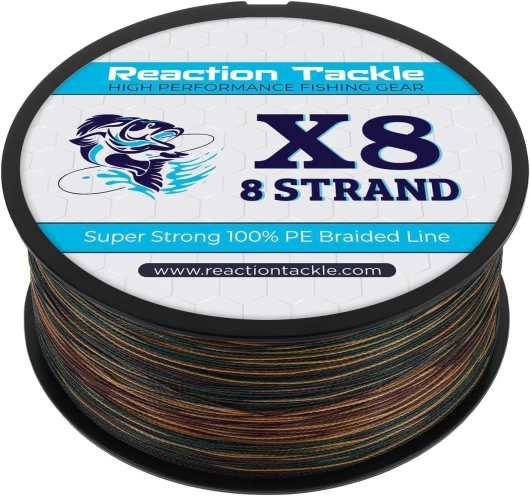
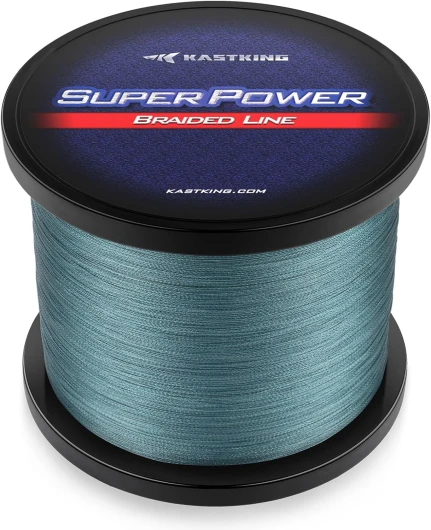
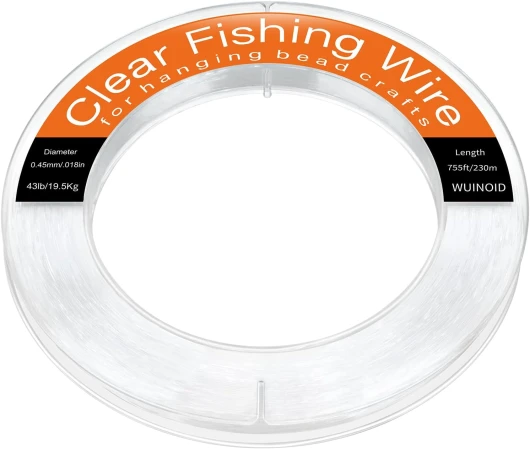
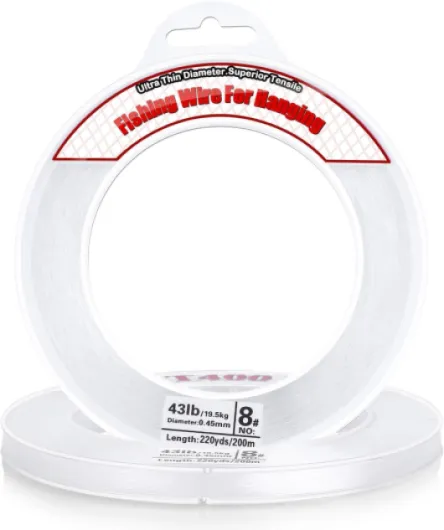
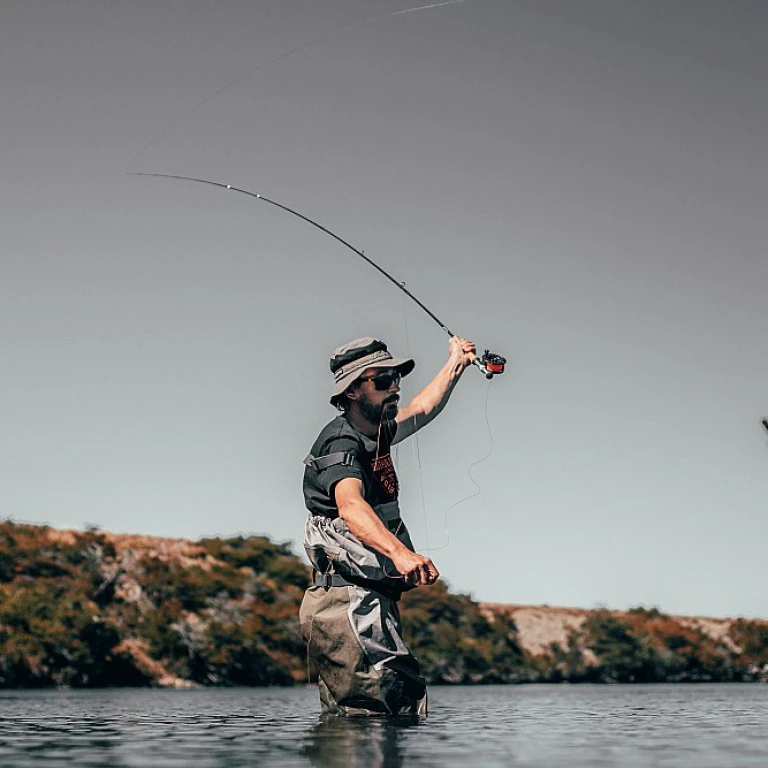

-large-teaser.webp)
